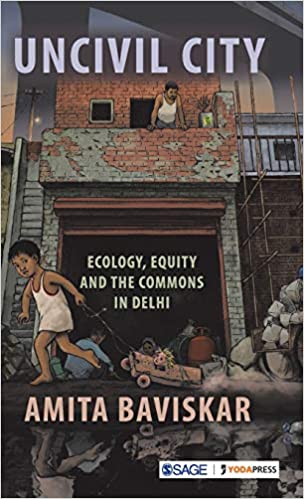Amita Baviskar brings her careful and serious considerations to the city of Delhi, and its environs, including Gurgaon, giving us interesting insights into an urban constellation we know so well. She looks at the way a city is constructed in terms of experiences and events, each in its own way structured by the memories of those who were witnesses to urban and rural transformation.
The city appears as it does to those who live in it. They cross large distances in private or public transport to get to their workplace, and to return home. For Baviskar, these simple routines are actually embellished by many other things and asking questions about them. How do people cope in a metropolis, what happens to a rural hinterland which is continuously appropriated legally or illegally for purposes of residence or for showmanship? What are the amenities available to people who live in the city? Who are the policy makers, and does global capitalism begin to infringe on human rights when politicians, bourgeoisie and people increasingly begin to see the working class as aliens, migrants who clutter up their daily view?

